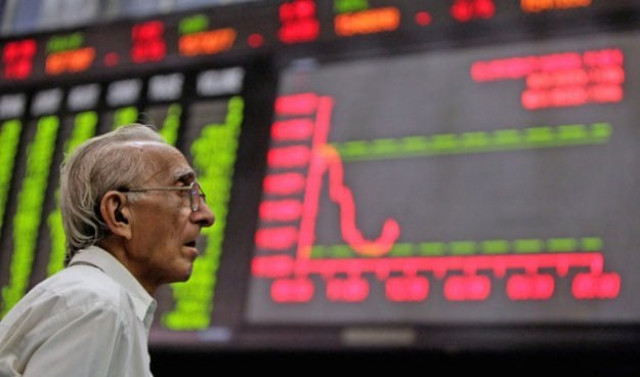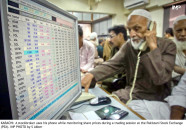For stock market stability, Pakistan needs reforms
Less stringent measures can be introduced for smaller companies or startups to help them raise capital

PHOTO: REUTERS
Too much happened too soon, though the benchmark KSE-100 index was trading at a price-to-earnings (P/E) ratio of 9.8, which is still reasonable even by the standard of Pakistan stock market.
Mutual fund investors, who stayed on the sidelines until a few months ago, are turning to the market as their clients are pouring more cash by seeing the recent market performance while foreigners, who bought stocks at multi-year lows, are booking some profit as noise emerged on the political front.
By looking at the V-shape recovery since touching a low of 28,670 points in August 2019, the question that may logically pop up in the mind of market participants is that if the economy is really turning the corner that fast?
To answer this question in the historical perspective and find out why the stock market responds so violently to any event and looking at the knee-jerk reaction that it exhibits, the term “volatility” needs to be explored. Volatility measures the gyration in the market and if the volatility of the KSE-100 index is compared with peer-market indices such as that of Bangladesh (SPBBI) and Vietnam (VHINDEX), then it is clear that Pakistan has one of the most wildly swinging markets in the region.
The peak volatility of more than 30% in August, when many sidelined investors and traders jumped on the bandwagon, points to some serious underlying issues and weaknesses in Pakistan’s market.
The main reason behind the extreme volatility is the lack of active investor base and liquidity in the market. If a large institutional investor places an order to buy or sell any stock, it gets locked in no time as the price moves beyond the ±5% limit known as the circuit breaker.
The liquidity and the traded volume is the blood that pumps life into the market. For foreign and institutional investors, any stock that lacks the minimum daily liquidity requirement is akin to a death trap and they always try to stay clear of it.
Now recently the PSX management decided to relax the circuit breaker mechanism by gradually increasing its limit to ±7.5% to give frustrated institutional investors some more room to get their orders filled before the circuit breaker is activated.
However, this measure will only help in managing the symptoms and will not prevent the cause, which is the lack of active stock market investors and traders.
Strict regulations
Unfortunately, the introduction of more stringent compliance measures will further push the investors away from the market as the Know Your Client (KYC) requirement is getting stricter mainly to meet demands of the Financial Action Task Force (FATF).
Haris Aslam, Head of AKD Trade Online, supports the introduction of new KYC and biometric requirements. However, he suggests that they should be brought in a phased manner with proper awareness and simplification.
He believes the gradual introduction of regulatory compliance measures is the only way to achieve the much-needed widening of the investor base in the market.
Other two issues are limited number of listed companies to invest in and unavailability of free float to trade in existing listed companies. There are many stocks whose even not a single share is traded for days and weeks and some of them are frequent visitors of the “Default Counter”.
Regulators and policymakers have to use the carrot and stick approach to penalise the non-compliant listed companies and incentivise businesses to list their companies in the market. Also less stringent measures can be introduced for the companies with smaller size or the startups interested in raising capital.
Beside these measures, the introduction of new and exciting products such as the full range of derivatives and Exchange Traded Funds (ETFs) and last but not the least a state-of-the-art trading platform are a few long pending steps needed to increase market participation and hence reduce volatility and provide some tighter spread for a more sustainable stock market growth.
The writer is a financial market enthusiast and attached to Pakistan’s stocks, commodities and emerging technology
Published in The Express Tribune, December 23rd, 2019.
Like Business on Facebook, follow @TribuneBiz on Twitter to stay informed and join in the conversation.


















COMMENTS
Comments are moderated and generally will be posted if they are on-topic and not abusive.
For more information, please see our Comments FAQ